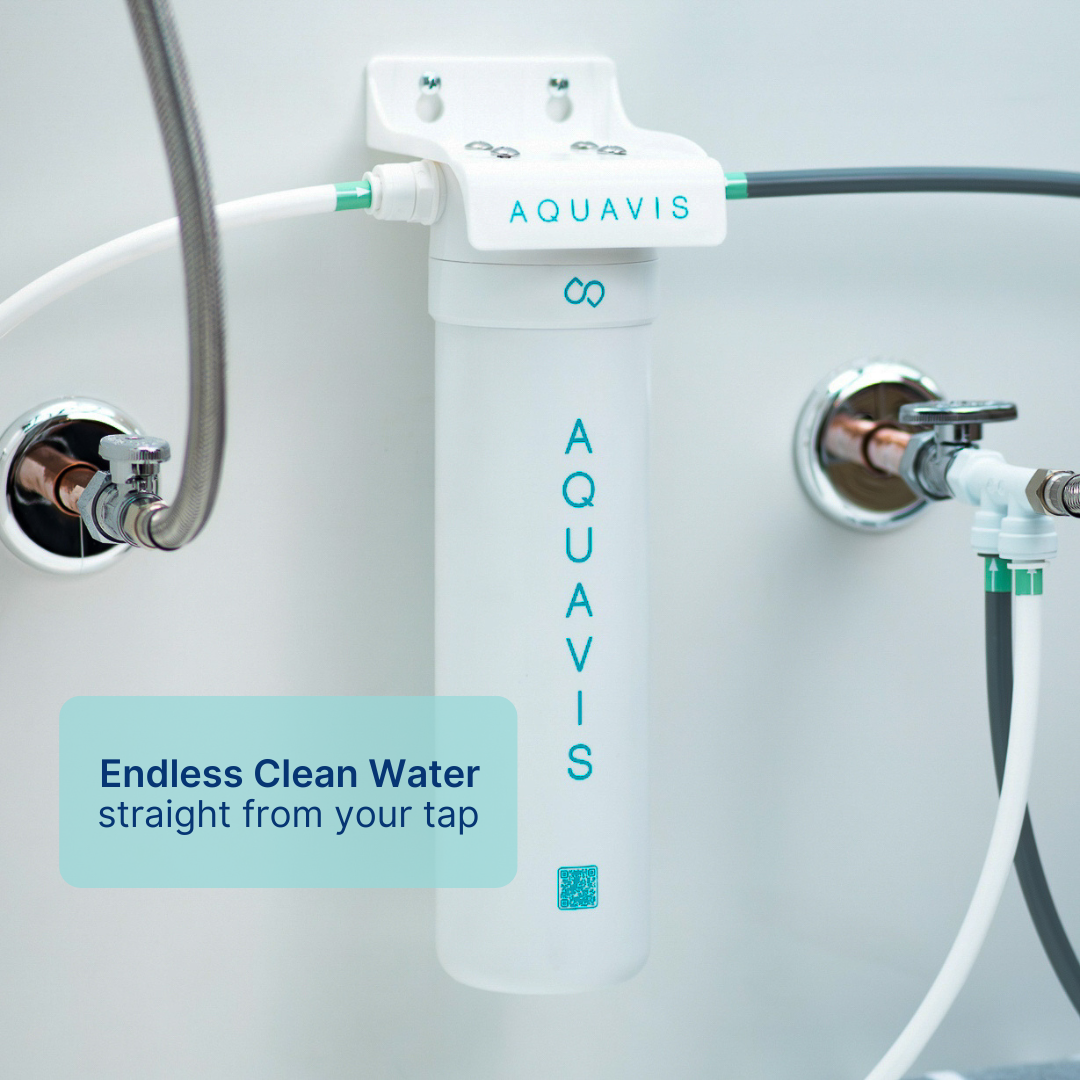Do you have a brand of water that you swear by? Or maybe you're more of the reusable bottle type, using tap water to keep yourself hydrated on the go? Whether your water supply is your very own home faucet or store-bought single-use plastic bottles, the question remains: Is bottled water or tap water better?
The answer might not be as simple as you'd expect. So let's dive in and discuss the pros and cons of bottled water and tap water to find out what your go-to water source should be!
Which Is Better: The Pros and Cons
If you've heard the rumors about tap and bottled water, you probably know that the quality of water from both sources leaves a little to be desired. Blind taste tests aside, the difference between tap and bottled water might not be as vast as you think.
Without further ado, here are the pros and cons of both kinds of water:
Bottled Water
Bottled water companies have long touted their ability to bottle fresh water from all over the globe: American spring water found deep within the Rockies and Fiji water from the exotic islands of Fiji. Whether or not these bottled water sources are legitimate is questionable, but it's hard to deny the fundamental difference in taste between store-bought water and home faucet water. But does the difference run deeper than taste? Let's find out!
The Pros
Convenience
Many bottled water sales can be attributed to the convenience of buying water on the go. Store bought bottles of water can be found virtually anywhere there's merchandise—from gas stations to county fair booths.
Thanks to the accessibility of bottled water, many people opt for this easy hydration option. In fact, because European water sources are limited by the lack of drinking fountains and water-bottle fillers, many tourists and locals alike drink bottled water when they're out and about.
Unlike many European water systems, American water systems provide free drinking stations in most public places, making it more convenient to use a refillable bottle on the go. But even with more accessible free water, store-bought water still seems to be a preference among many Americans.
Taste
A widely referenced reason for buying store-bought water is its taste. While taste can differ depending on the brand, mineral content tends to have a large impact on water taste. Those who dislike the taste of mineral-rich tap water sources often opt for mineral-deficient bottled water (such as distilled water). Other individuals find that the water from their taps doesn't contain a high enough mineral content, and instead prefer mineral-rich bottled water.
Contaminants can also affect the taste of water. Because most bottled water plants put their water through a more rigorous filtration and purification process than public tap water, water in plastic bottles often offers a fresher, cleaner taste.
Variety
With dozens of brands and types, store-bought water has something for everyone. Between distilled water, spring water, and flavored water, you can find water flavors or types that satiate your thirst in a way that American tap water sources can't. Here are just a few of the many types store-bought water offers:
- Mineral water: Minerals provide essential nutrients that keep human bodies functioning properly. Unfortunately, mineral analysis reports suggest that most traditional bottled waters do not contain sufficient mineral levels. Mineral water, on the other hand, contains higher sodium and calcium levels, making it a better hydration option.
- Sparkling water: For those who prefer a little bit of kick with their hydration, sparkling water blends seltzer-style carbonation with the refreshing taste of regular water. You can choose from a variety of flavored sparkling water, as well, adding just a hint of taste or providing a healthier substitute for soda.
- Electrolyte water: Sport fanatics might opt to hydrate with electrolyte-rich water, keeping their sodium levels replenished after intense physical activity. Many electrolyte water brands also include other helpful minerals like calcium and magnesium in their water, to help consumers maintain healthy mineral levels.
The Cons
Safety
Between variations in mineral levels and diversity in flavor profiles, store-bought water seems to be a superior hydration option, but what's its status on safety? Surprisingly, the safety category is where store-bought water takes a dive. Recent studies have shown that store-bought water in plastic bottles is filled with nano and microplastics. And if you're wondering just how filled, brace yourself: researchers found that just one liter of water contained as many as 240,000 nano and microplastics on average.
While researchers are yet to fully understand the health impacts of nano and microplastic consumption, further studies have discovered these plastics in various parts of the human body, including the bloodstream. Though the adverse health effects of these plastic particles are still being studied, this research begs the question: is water from plastic bottles actually safe for human consumption?
Cost
Plastic water bottles may seem convenient, but their cost can add up over time. Statistics show that in 2022 alone, Americans spent over 4.5 billion dollars on store-bought water. From daily commutes and gym sessions to simply staying hydrated throughout the day, the expenses on store-bought water can take a toll on a family's finances. Switching to alternative options like reusable bottles or filtered tap water can significantly alleviate this financial burden in the long run, offering both economic and environmental benefits.
Environmental Impact
Plastic water bottles significantly contribute to the growing problem of landfill waste. Every year, millions of these bottles are discarded, ending up in landfills where they can take hundreds of years to decompose. This waste not only takes up valuable space, but also poses environmental hazards as plastic bottles break down into microplastics, contaminating soil and water sources.
By switching to a refillable bottle or opting for filtered tap water, individuals can drastically reduce this waste. In fact, a single person using a refillable bottle can keep an average of 156 plastic bottles from entering landfills each year. This simple change conserves resources, reduces pollution, and supports a more sustainable future for our planet.
Reduce your waste contribution with the Luma UV Water Bottle from Aquavis. The Luma bottle not only saves you money and cuts down on waste, but also protects you from harmful bacteria using its built-in UV light purification system.
Tap Water
Tap water is a readily available resource that flows through public water systems directly into our home from local water treatment plants. Sourced from rivers, lakes, and underground aquifers, this water is treated and tested to meet regulatory standards before it reaches our faucets.
The Pros
Cost
Switching to tap water can significantly cut down on household expenses. Because the cost per gallon of tap water is so low, families can save hundreds of dollars a year by choosing tap water over bottled water. Even with adding on an in-home filtration system like the Aquavis Pulse, the total cost of tap water is considerably lower than that of store-bought water.
Access
While you might not have access in all locations, tap water is still a remarkably convenient option. Thanks to reusable bottles like the Luma, you can bring tap water with you on the go—no need to run to the store or haul around heavy cases of bottled water. With a simple turn of the tap, you have instant access to clean drinking water whenever you need it.
In the United States, free public drinking water is provided in most locations—including parks, stores, and airports—so you can refill your bottle whenever you need.
Environmental and Health Impact
Using tap water instead of bottled water can make a remarkable difference for the environment. By avoiding plastic bottles, a single household can prevent hundreds of these containers from ending up in landfills each year, contributing to a significant reduction in plastic waste and pollution.
Additionally, tap water contains far fewer nano and microplastics than bottled water, making it a healthier option for hydration. Tap water also boasts higher mineral levels than most regular bottled water (excluding mineral waters), helping consumers maintain healthy levels of essential minerals in their bodies.
The Cons
Unfiltered Taste
One drawback of tap water is its distinct taste, which can be unappealing to some. Depending on the municipal water source and treatment process, tap water can have an unfavorable taste, making it less desirable for those accustomed to the taste of bottled water.
Contaminants
Most tap water sources are required to meet certain quality standards especially in regards to maximum contaminant levels. However, there are contaminants that can slip through the cracks. Contaminants such as residual harmful chemicals and trace elements from agricultural runoff or industrial discharge can pollute our groundwater.
Here are just a few of the contaminants that might be found in tap water:
- Lead: Often introduced through aging pipes, lead can have serious adverse effects on health, especially in children.
- VOCs: Volatile Organic Compounds can enter the water supply through industrial pollution, causing adverse health and environmental effects.
- PFAS: Known as "forever chemicals," PFAS can persist in the environment and accumulate in the human body, leading to serious health issues.
Aquavis: the Best of Both Worlds
Now that we've covered the pros and cons of both tap and bottled water, let's circle back to our original question: which is better?
When it comes to price and environmental impact, tap water is the clear winner. On the other hand, bottled water might pull ahead in the taste category. But what about safety? Between contaminants and microplastics, both bottled and tap water receive low marks for safety—arguably the most important factor of all.
So what's the answer? That's where Aquavis comes in.
The Aquavis Pulse under-sink filter takes the cake in every category: cost, taste, convenience, and safety. This activated carbon filter combines the clean, fresh taste of bottled water with the cost-effective accessibility of tap water. Installed in minutes, the Aquavis Pulse fits neatly under your sink to provide your family with safe, healthy drinking water.
Here are just a few of the benefits Aquavis offers:
- Unlimited safe water: Unlike bottled and tap water, the Aquavis Pulse filters water from a wide range of harmful contaminants including microplastics, heavy metals, VOCs, PFAS, cysts, and chlorine. Say goodbye to unsafe, unhealthy water.
- Affordable cost: The Aquavis Pulse provides up to 500 gallons of clean water for less than it would cost to get seven cases (22 gallons) of Dasani from Walmart.
- Great taste: Thanks to its advanced carbon filtration, the Aquavis Pulse removes the contaminants that can cause water to have an unpleasant taste, while still keeping healthy minerals.
- Convenient and accessible: Our simple under-sink system can be installed without any professional help, unlike many other filtration systems. In minutes, you can enjoy tasty, healthy water right in your own home.
Choose Aquavis
As concerns continue to surface about the safety of tap water and bottled water, Aquavis works hard to provide you and your family with a water source you can trust. At Aquavis, we know how important it is to keep our families safe and make the world a better place. That's why we created the Aquavis Pulse.
So what are you waiting for? Put your family's health and the planet's health first—choose Aquavis today!



